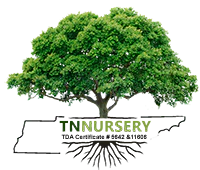Filters
How to Use Live Stakes in Restoring Wetland and Stream Habitat
Are you looking to improve a stream or wetland area? Welcome better soil retention, ecological health, and attractive native trees back to the degraded stream and wetland areas using live stakes.
Loss of rooted plants along stream banks and wetland areas can harm the environment, allowing soil to erode from the land into surrounding waters. Trees are essential along aquatic areas as protective buffers between land and water, wildlife habitat, and shade that healthy streams require. One way to quickly restore plant life to degraded areas is through live staking, which involves planting and cutting into the ground. Live stakes are cut from trees during their dormant phase and eventually grow into new trees.
Live stakes will establish roots and stabilize deforested streams and wetland areas
The planting of tree stakes is a simple process with quick results. Live stakes are a relatively inexpensive option for restoration plantings, especially compared to the cost and time expense of obtaining and planting whole trees.
With careful planning and timely planting, they can grow from dormant stems to beautiful, healthy trees that naturally retain soil. Willow and dogwood are some of the best trees for live staking, as these species are often found growing along streams and wetlands and are usually suited to wetter habitats. As an added benefit, many of these species also provide food and nectar for native animals. The harvested live stakes should be kept root end-down in a bucket of water after they are obtained from the nursery. Plant stakes in the dormant spring season before buds emerge.
These cuttings can sit in water for a couple of days before planting, but give the stakes a fresh, angled cut at the root end to help the planting and rooting process. Planting live stakes is easy – all you need are waterproof boots and a tool to make holes. Stakes should be planted on land along the water but close enough that the stakes will be able to reach the water table with their roots.
How to Plant Live Stakes In Ponds or Wetland Areas Like Lakes
Use a re-bar to create a hole in the stream or wetland bank soil, then insert the live stake into the soil so that about half of the stake is in the soil. After they are planted, stakes will establish roots in the first spring.
These may not show growth above ground in the first year, but once roots are established, the trees will begin to grow and should produce leaves the following spring. Aside from checking on the stakes’ progress, no maintenance, watering, or weeding is necessary. Just enjoy watching nature take over as tree roots return to the soil.









